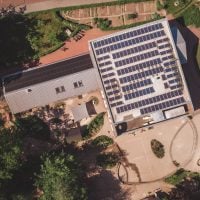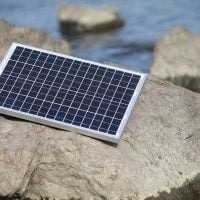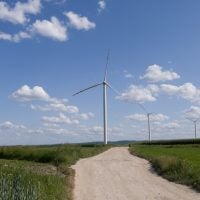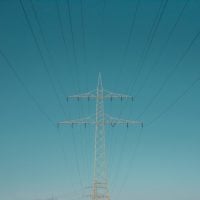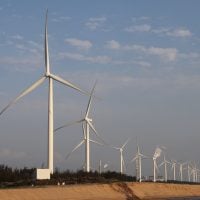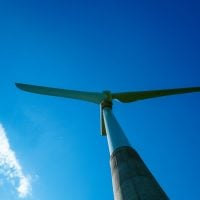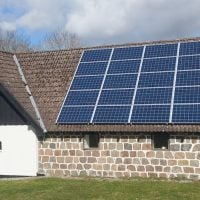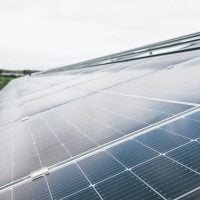The clean energy sector is rapidly evolving, driven by technological advancements, policy changes, and a growing public awareness of climate change. For NGO professionals, understanding the landscape of clean energy competitions is crucial for identifying opportunities that align with their mission and objectives. These competitions often serve as platforms for innovation, encouraging organizations to develop and showcase sustainable solutions that can address pressing environmental challenges.
By familiarizing themselves with the various types of competitions—ranging from local initiatives to international challenges—NGOs can strategically position themselves to leverage these opportunities for funding, collaboration, and visibility. Moreover, the competitive landscape is not just about winning grants or prizes; it’s also about networking and building relationships with other stakeholders in the clean energy field. Engaging with other participants, judges, and sponsors can lead to valuable partnerships that extend beyond the competition itself.
Understanding the motivations of different stakeholders—such as government agencies, private investors, and community organizations—can help NGOs tailor their approaches and increase their chances of success. By staying informed about trends and emerging technologies in clean energy, NGOs can better navigate the competition landscape and identify where their unique strengths can make a significant impact. Are You Working on Solar Innovation or Clean Energy Access? Join us to receive updates.
Key Takeaways
- Clean energy competition landscape is competitive and diverse
- Research and identify the right clean energy competition to maximize chances of success
- Craft a compelling executive summary to grab the attention of judges and investors
- Develop a strong value proposition that highlights the unique benefits of the clean energy project
- Outline a clear and feasible project plan to demonstrate the practicality of the proposal
Researching and Identifying the Right Clean Energy Competition
Once NGOs have a grasp of the clean energy competition landscape, the next step is to research and identify competitions that align with their goals and capabilities. This process involves a thorough analysis of various competitions, including their themes, eligibility criteria, application processes, and judging criteria. NGOs should consider factors such as the competition’s focus area—whether it’s solar energy, wind power, energy efficiency, or another niche—and how it aligns with their mission.
For instance, an NGO focused on community solar projects may prioritize competitions that emphasize social equity in energy access. In addition to thematic alignment, NGOs should evaluate the competition’s reputation and track record. Researching past winners can provide insights into what judges are looking for and what types of projects have been successful.
Furthermore, understanding the competition’s network can reveal potential collaborators or mentors who could provide guidance throughout the application process. By carefully selecting competitions that resonate with their mission and strengths, NGOs can enhance their chances of success while also ensuring that their efforts contribute meaningfully to the clean energy sector.
Crafting a Compelling Executive Summary

The executive summary is often the first impression judges will have of an NGO’s proposal, making it a critical component of any application. A compelling executive summary should succinctly convey the essence of the project, its objectives, and its anticipated impact. It should grab the reader’s attention while providing a clear overview of what makes the project unique and worthy of support.
To achieve this, NGOs should focus on clarity and conciseness, avoiding jargon while still conveying technical details that demonstrate expertise. In crafting this summary, NGOs should highlight key elements such as the problem being addressed, the innovative solution proposed, and the expected outcomes. Real-world examples can be particularly effective; for instance, referencing a successful pilot project or case study can lend credibility to the proposal.
Additionally, NGOs should ensure that their passion for the project shines through in the writing. A well-crafted executive summary not only informs but also inspires confidence in the NGO’s ability to execute the project successfully.
Developing a Strong Value Proposition
A strong value proposition is essential for distinguishing an NGO’s project from others in a competitive field. It articulates why the proposed solution is not only innovative but also necessary in addressing specific challenges within the clean energy sector. To develop a compelling value proposition, NGOs should start by identifying their target audience and understanding their needs and pain points.
This involves engaging with stakeholders—such as community members, policymakers, and industry experts—to gather insights that can inform the proposal. Once NGOs have a clear understanding of their audience, they can articulate how their project addresses these needs in a unique way. This could involve highlighting innovative technologies, community engagement strategies, or partnerships that enhance the project’s effectiveness.
For example, an NGO proposing a new solar installation might emphasize its commitment to training local workers in installation techniques, thereby creating jobs while promoting renewable energy adoption. By clearly communicating this value proposition in their proposals, NGOs can effectively demonstrate why their project deserves funding and support.
Outlining a Clear and Feasible Project Plan
A well-structured project plan is vital for demonstrating to judges that an NGO has thought through every aspect of implementation. This plan should outline key activities, timelines, milestones, and responsible parties involved in executing the project. By breaking down the project into manageable phases, NGOs can provide a clear roadmap that illustrates how they will achieve their objectives within the competition’s timeframe.
In addition to outlining activities, NGOs should also consider including contingency plans for potential challenges that may arise during implementation. This proactive approach not only showcases thorough planning but also reassures judges that the NGO is prepared to adapt as needed. For instance, if an NGO is implementing a wind energy project in a region prone to extreme weather events, they might outline strategies for ensuring safety and continuity during such occurrences.
A clear and feasible project plan not only enhances credibility but also increases the likelihood of successful execution.
Demonstrating Technical and Financial Feasibility

Judges will closely scrutinize both technical and financial feasibility when evaluating proposals for clean energy competitions. To demonstrate technical feasibility, NGOs should provide evidence of their project’s viability through data, research findings, or pilot studies that support their approach. This could include technical specifications of proposed technologies or methodologies that have been successfully implemented elsewhere.
Financial feasibility is equally important; NGOs must present a realistic budget that outlines all anticipated costs associated with the project. This includes direct costs such as materials and labor as well as indirect costs like administrative expenses. Additionally, NGOs should detail their funding strategy—whether through grants, partnerships, or community contributions—to show how they plan to sustain the project financially over time.
By thoroughly addressing both technical and financial aspects in their proposals, NGOs can instill confidence in judges regarding their ability to execute the project effectively.
Highlighting the Environmental and Social Impact
In today’s world, demonstrating environmental and social impact is paramount for any clean energy initiative. Judges are increasingly looking for projects that not only advance renewable energy but also contribute positively to communities and ecosystems. NGOs should articulate how their project will reduce carbon emissions, promote biodiversity, or enhance local resilience to climate change impacts.
Social impact is equally critical; NGOs should highlight how their project will benefit local communities—whether through job creation, improved health outcomes, or increased access to clean energy resources. For example, an NGO implementing a solar microgrid in an underserved area could emphasize how this initiative will provide reliable electricity to schools and healthcare facilities while empowering local residents through training programs. By clearly outlining both environmental and social impacts in their proposals, NGOs can effectively convey the broader significance of their work.
Addressing Potential Risks and Mitigation Strategies
Every project comes with inherent risks; acknowledging these risks upfront demonstrates transparency and preparedness to judges evaluating proposals. NGOs should conduct a thorough risk assessment to identify potential challenges that could arise during implementation—such as regulatory hurdles, technological failures, or community resistance—and outline strategies for mitigating these risks. For instance, if an NGO anticipates potential pushback from local stakeholders regarding a new wind farm project, they might include plans for community engagement initiatives aimed at addressing concerns and fostering support.
By proactively addressing potential risks and presenting thoughtful mitigation strategies in their proposals, NGOs can reassure judges that they are equipped to navigate challenges effectively.
Creating a Detailed Budget and Financial Projections
A detailed budget is a cornerstone of any successful proposal for clean energy competitions. It should provide a comprehensive breakdown of all anticipated costs associated with the project while also aligning with the overall goals outlined in the proposal. NGOs should ensure that their budget reflects realistic estimates based on thorough research and past experiences.
In addition to outlining costs, NGOs should include financial projections that demonstrate how they plan to sustain the project over time. This could involve detailing revenue streams from energy sales or savings generated through increased efficiency measures. By presenting a clear financial picture that includes both immediate costs and long-term sustainability plans, NGOs can enhance their credibility and appeal to judges looking for viable projects.
Building a Strong Team and Partnerships
The strength of an NGO’s team can significantly influence its chances of success in clean energy competitions. Judges often look for diverse teams with complementary skills that enhance project execution capabilities. NGOs should highlight key team members’ qualifications—such as relevant experience in clean energy technologies or community engagement—and demonstrate how these skills will contribute to achieving project goals.
Additionally, forming strategic partnerships can bolster an NGO’s proposal by showcasing collaboration with other organizations or stakeholders in the clean energy sector. For example, partnering with local universities for research support or collaborating with businesses for funding can enhance credibility while expanding resources available for project implementation. By emphasizing both team strengths and partnerships in their proposals, NGOs can present a compelling case for why they are well-equipped to succeed.
Reviewing and Refining the Proposal for Submission
Before submitting any proposal for a clean energy competition, thorough review and refinement are essential steps that cannot be overlooked. This process involves revisiting each section of the proposal to ensure clarity, coherence, and alignment with competition guidelines. Engaging colleagues or external reviewers can provide fresh perspectives on areas that may need improvement or clarification.
Additionally, NGOs should pay close attention to formatting requirements outlined by competition organizers—such as word limits or specific document structures—to avoid disqualification due to technicalities. Taking time for this final review phase not only enhances the overall quality of the proposal but also demonstrates professionalism and attention to detail—qualities that judges value highly when evaluating submissions. In conclusion, navigating clean energy competitions requires careful planning and strategic execution from NGO professionals.
By understanding the landscape of competitions available to them and following best practices in proposal development—from crafting compelling summaries to demonstrating feasibility—NGOs can position themselves for success while contributing meaningfully to advancing clean energy solutions worldwide.

